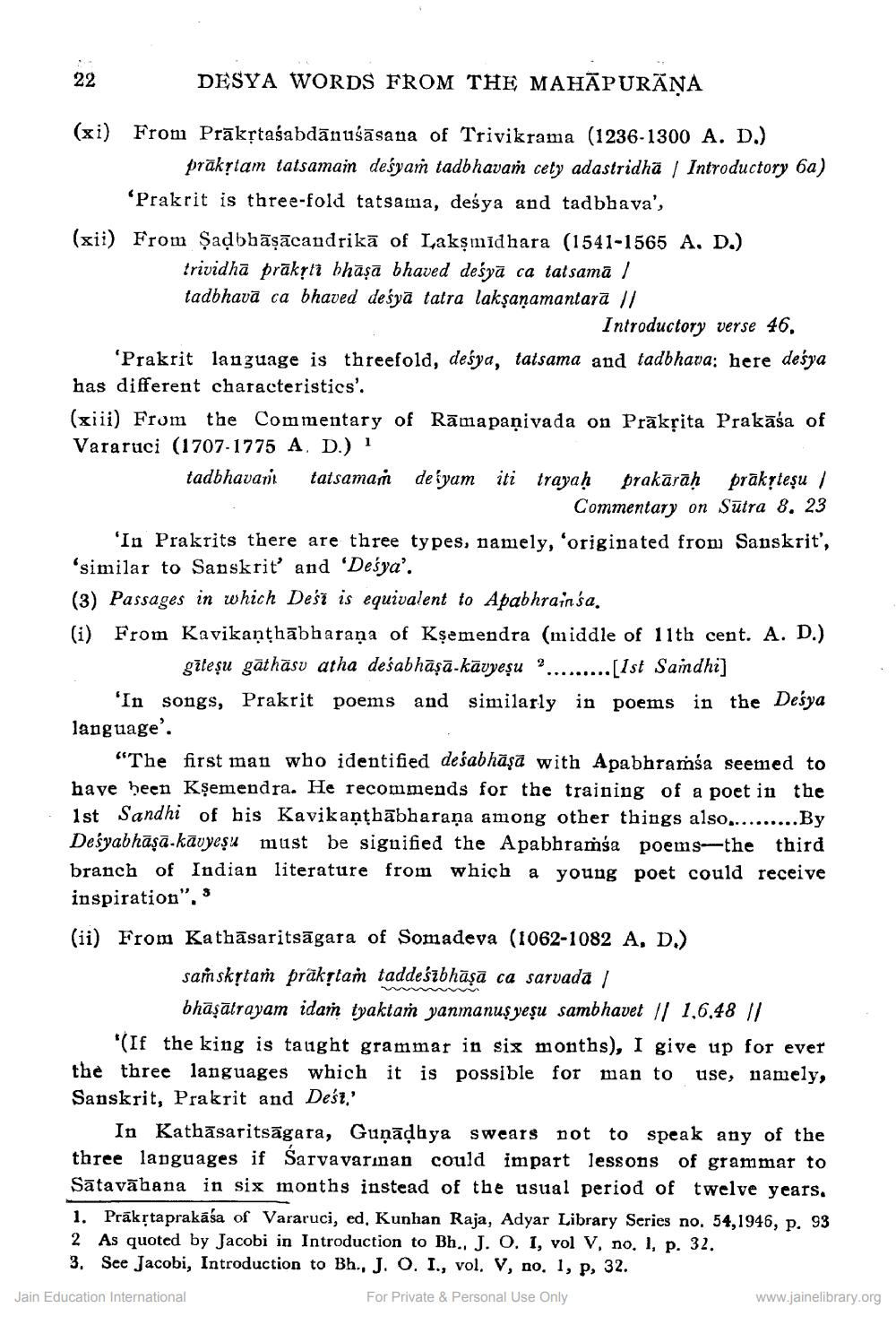________________
22
DESYA WORDS FROM THE MAHĀPURĀŅA
(xi) From Prākṣtaśabdānušāsana of Trivikrama (1236-1300 A. D.)
prakstam tatsamain deśyaṁ tadbhavam cely adastridhä / Introductory 6a) Prakrit is three-fold tatsama, desya and tadbhava',
(xii) From $adbhāṣācandrikā of Lakşmidhara (1541-1565 A, D.)
trividha prākrti bhāṣā bhaved deśyā ca tat sama / tadbhavā ca bhaved deśyā tatra laksanamantara //
Introductory verse 46, 'Prakrit language is threefold, desya, tatsama and tadbhava: here desya has different characteristics'. (xiii) From the Commentary of Rāmapanivada on Prākrita Prakāśa of Vararuci (1707-1775 A. D.) 1 tadbhavani tatsaman deyam iti trayah prakārāḥ prāksteşu
Commentary on Sūtra 8, 23 'In Prakrits there are three types, namely, 'originated from Sanskrit', 'similar to Sanskrit' and 'Deśya'. (3) Passages in which Deši is equivalent to Apabhrainsa. (i) From Kavikanthābharaṇa of Kșemendra (middle of 11th cent. A. D.)
găteşu gāthasv atha deśabhāṣā kāvyesu ?.........[1st Saidhi] 'In songs, Prakrit poems and similarly in poems in the Desya language'.
"The first man who identified deśabhäşa with Apabhramsa seemed to have heen Kşemendra. He recommends for the training of a poet in the 1st Sandhi of his Kavikanthābharaṇa among other things also..........By Desyabhāṣā.kāvyeşu must be signified the Apabhramsa poems--the third branch of Indian literature from which a young poet could receive inspiration". 3 (ii) From Kathāsaritsāgara of Somadeva (1062-1082 A, D.)
saņskytań prākstai taddeśābhāṣā ca sarvada /
bhāşātrayam idam tyakta yanmanuş yeşu sambhavet // 1,6,48 // '(If the king is taught grammar in six months), I give up for ever the three languages which it is possible for man to use, namely, Sanskrit, Prakrit and Dest.'
In Kathasaritsāgara, Gunādhya swears not to speak any of the three languages if Sarvavarman could impart lessons of grammar to Sātavābana in six months instead of the usual period of twelve years. 1. Prākrtaprakāśa of Vararuci, ed. Kunhan Raja, Adyar Library Series no. 54,1946, p. 93 2 As quoted by Jacobi in Introduction to Bh. J. O. 1, vol V, no. I, p. 32. 3. See Jacobi, Introduction to Bh., J. O. I., vol. V, no. 1, p. 32.
Jain Education International
For Private & Personal Use Only
www.jainelibrary.org




